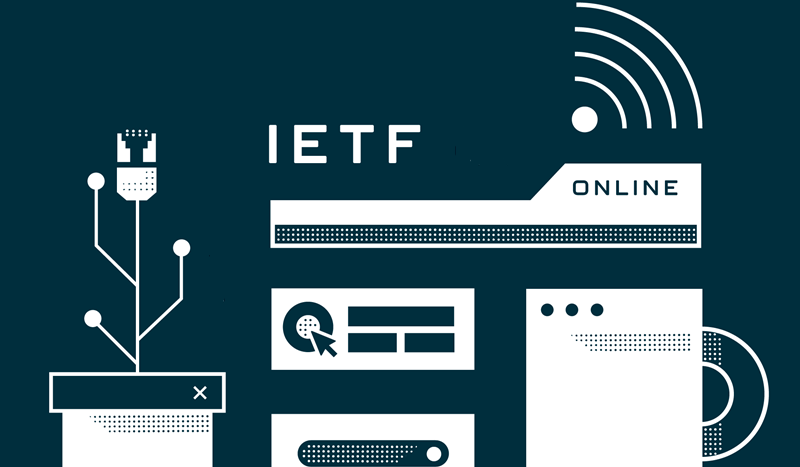On June 20, an unexpected development unfolded in the realm of internet engineering when significant service outages were reported affecting the Internet Engineering Task Force (IETF). The IETF, a key organization that develops and promotes voluntary internet standards, particularly the technical and architectural aspects of the internet, experienced these outages during an infrastructure transition. The incident was a considerable disruption, affecting many users and businesses that rely on the organization’s protocols.
The infrastructure transition was part of an upgrade initiative, aimed at enhancing service delivery and improving the overall user experience. However, the process did not go as smoothly as anticipated, leading to the service outages. The unexpected interruption caused considerable inconvenience, triggering a cascade of disruptions that affected various aspects of internet communication. Among the services that suffered were email delivery, real-time communication, and even some web-based services. The incident underscored the inherent risks associated with infrastructural transitions, even when conducted by such a technically proficient organization.
It highlighted the need for robust contingency plans and meticulous implementation strategies to mitigate similar occurrences in the future. In response to the service outages, the IETF sprung into action, marshalling its resources to rectify the situation. The team worked tirelessly, addressing the technical glitches that had led to the outages.
After a period of intensive efforts, normal service was gradually restored, much to the relief of the affected users and businesses. This incident served as a reminder of the vital role the IETF plays in internet communication and the potential impact of service outages. It also emphasized the importance of ensuring a seamless transition during infrastructure upgrades to prevent such incidents.
Causes of the June 20 IETF Outages
The Internet Engineering Task Force (IETF) experienced a series of outages on June 20, due to a multitude of reasons. Primarily, technical issues were at the forefront, including server failure and connectivity issues. The server failure was attributed to hardware malfunction, which resulted in the automated systems failing to perform their tasks effectively. This led to a shutdown of the primary server, causing significant disruption in the IETF operations.
In addition, the connectivity problems were due to network congestion and a failure in the Internet Service Provider (ISP). The congestion occurred because of a sudden surge in the number of users accessing the services simultaneously, which overloaded the system. As for the ISP failure, it was due to an unexpected outage in their system, which in turn interrupted the connection to the IETF server. Furthermore, cyber-attacks were also a contributing factor to the outages.
These attacks, specifically Distributed Denial of Service (DDoS) attacks, overloaded the IETF’s systems with superfluous requests, thereby causing a disruption in the service. Lastly, insufficient backup systems were also to blame. The absence of robust backup systems led to a failure in swift recovery when the primary systems malfunctioned. In conclusion, a combination of hardware malfunctions, network congestion, ISP failure, cyber-attacks, and inadequate backup systems were the primary causes of the June 20 IETF outages.

Impact on IETF Services and Users
The IETF (Internet Engineering Task Force) is a large, open international community of network designers, operators, vendors, and researchers dedicated to the evolution and smooth operation of the internet. It is an influential body that sets standards to ensure that the internet functions efficiently and effectively. The decisions and policies of the IETF have a significant impact on its services and users. For instance, when the IETF develops and implements new standards or protocols, it can lead to improved internet services, such as faster data transmission, enhanced security, and better compatibility among different systems and devices.
These improvements can provide users with a more seamless and secure online experience. Conversely, if the IETF makes decisions that disrupt the status quo without careful consideration, it can potentially cause confusion or disruption for service providers and users. For example, introducing a new protocol that is not compatible with existing systems could lead to technical issues and increased costs for service providers, which could in turn negatively affect users. Therefore, it is crucial for the IETF to engage with its community and consider the potential impacts on its services and users when making decisions.
This helps to ensure that the internet continues to evolve in a way that benefits all stakeholders. The IETF also plays a significant role in promoting internet accessibility and inclusivity. By developing standards that support a wide range of devices and technologies, it enables more people to access and use the internet, regardless of their location or resources. This has profound implications for digital inclusion and the democratization of information and opportunities. In conclusion, the IETF’s decisions and policies can have far-reaching effects on its services and users, underscoring the importance of its role in shaping the future of the internet.
Steps Taken to Resolve the Outages
In addressing the issue of outages, several steps are initiated to ensure a swift resolution. Initially, the problem is identified through monitoring systems designed to track the performance of the network. These systems alert the technical team to any anomalies or irregularities that might indicate a problem or outage. Once the issue has been detected, a thorough investigation is conducted to determine the root cause.
This is a crucial step as it helps understand the nature of the problem, and hence the most effective solution. Next, a strategy is formulated to address the issue, and the necessary actions are taken to rectify it. This could involve resetting the system, replacing faulty hardware, or reconfiguring the network settings. In instances where the outage is due to external factors such as natural disasters, contingency plans are activated. These may include activating backup systems or rerouting services through alternative channels. Simultaneously, communication with stakeholders is maintained throughout the process.
This involves providing regular updates on the status of the outage, the steps being taken to resolve it, and the estimated timeline for restoration of services. Once the issue is resolved, a postmortem analysis is conducted to understand why the problem occurred and how it was handled. This helps in devising strategies to prevent similar occurrences in the future, and to improve the response time and efficiency of dealing with any such incidents.
Lastly, mitigation measures are put in place to strengthen the resilience of the system against future outages. These steps are all part of a comprehensive approach to managing and resolving outages, ensuring that services are restored as quickly as possible and that the impact on end users is minimized.

Lessons Learned from the Transition
The transition period, whether it’s personal, professional, or societal, often serves as a profound teacher. It unravels a myriad of lessons that significantly contribute to our growth and understanding of life. One of the paramount lessons learned from transitions is the importance of adaptability. Change is the only constant in life and being able to adapt to new circumstances, environments, or situations is a vital skill. It encourages resilience, fostering the ability to bounce back from adversities and challenges.
Another crucial lesson during transitions is the importance of patience. Transitions typically do not happen overnight; they require time and gradual adjustments. It’s a process that teaches us to wait and trust in the unfolding of events. It encourages a mindset of perseverance and endurance, which are key to successfully navigating through any transition.
Moreover, transitions can often bring about feelings of discomfort and uncertainty. However, these feelings can be beneficial as they push us to step out of our comfort zones. They provide opportunities for growth, self-discovery, and a deeper understanding of our capacities and limitations. They remind us that it’s normal to feel uncertain and uncomfortable, and that these feelings are often precursors to significant growth and transformation.
Furthermore, transitions teach us about the impermanence of life. They remind us that everything is transient and nothing lasts forever. This understanding can lead to a more appreciative and grateful outlook on life, as we learn to cherish each moment and accept the inevitable changes that come our way.
Lastly, transitions highlight the importance of support systems – be it family, friends, or professional help. They show us that we don’t have to go through changes alone. Having a support system can provide emotional comfort, practical help, and guidance, making the transition process more manageable and less overwhelming.
In conclusion, transitions, while challenging, can be a treasure trove of life lessons. They teach us adaptability, patience, the value of discomfort, the impermanence of life, and the importance of support systems. Ultimately, these lessons help us evolve, grow, and navigate life’s changes with greater ease and understanding.

Future Plans to Prevent Service Interruptions
In an era where technology increasingly influences every aspect of our lives, the importance of maintaining reliable service cannot be overstated. As such, future plans to prevent service interruptions are a critical focus for many organizations and businesses. One of the leading strategies is the incorporation of redundancy in systems design. This involves creating backup or fail-safe systems that automatically kick in when the primary system fails. Redundancy can be built into every level of an organization’s infrastructure, from hardware to software, and even personnel.
Another strategy involves the implementation of predictive analytics and machine learning algorithms, which can help identify potential system vulnerabilities and predict possible points of failure before they happen. These insights can then be used to proactively address issues, thereby preventing service interruptions.
Maintaining and regularly updating software and hardware components is also essential, as outdated systems are often more prone to failure. Regular maintenance schedules can be set up to check systems for any signs of potential issues that could lead to interruptions.
Furthermore, employee training is crucial in preventing service interruptions. Staff should be well-versed in the organization’s systems and trained to respond effectively to any potential disruptions. This includes knowing when and how to switch to backup systems, as well as understanding the steps necessary to restore primary systems to full functionality.
Lastly, a robust disaster recovery plan is vital. This plan should outline the steps to be taken in the event of a catastrophic event, such as a natural disaster or a major cyber-attack, ensuring that services can be restored as quickly and efficiently as possible.
In conclusion, while service interruptions can never be completely eliminated, a combination of redundancy, predictive analytics, regular maintenance, employee training, and disaster recovery planning can significantly reduce their likelihood and impact. By prioritizing these strategies, organizations can not only ensure the continuity of their services but also build trust with their customers and stakeholders.
